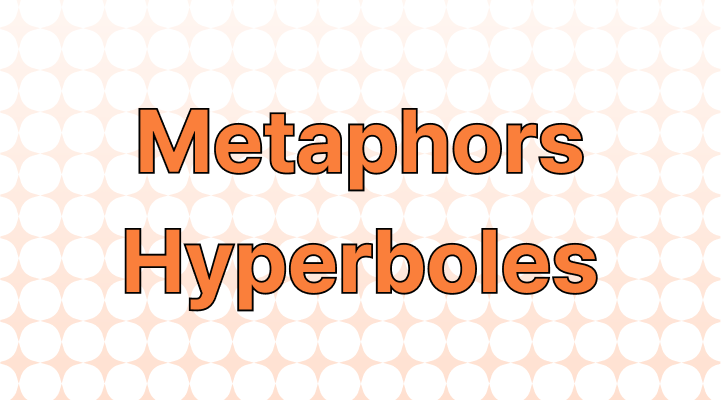Figurative language, the art of using words in imaginative ways, encompasses various techniques such as metaphors, similes, and personification to convey deeper meanings and evoke vivid imagery.

Figurative language adds depth and richness to our communication, allowing us to express ideas in vivid and imaginative ways. From metaphors to hyperbole, each type of figurative language serves a unique purpose in conveying meaning and evoking emotions. Let's explore some of the most common types and how they enhance our everyday language.
Types of figurative language
Metaphor: Perhaps the most recognizable form of figurative language, a metaphor draws a comparison between two unrelated things, suggesting that they share similar qualities. For example, "The world is a stage," equates life to a theatrical performance, highlighting the idea of human existence as a dramatic production.
Simile: Similar to a metaphor, a simile also compares two things, but it does so using the words "like" or "as." This subtle distinction adds clarity to the comparison. An example would be, "Her laughter was like music," emphasizing the joy and harmony of her laughter. A metaphor would omit the "like" and would simply be, "Her laughter was music."
Personification: Personification attributes human characteristics to non-human entities, such as animals, objects, or abstract concepts. By doing so, it brings these entities to life and enhances the reader's understanding. For instance, "The trees whispered secrets in the wind," imbues trees with the ability to communicate, creating a sense of mystery and intrigue.
Hyperbole: Hyperbole involves exaggeration for emphasis or effect. It amplifies a statement beyond its literal meaning to make a point or evoke strong emotions. For example, "I've told you a million times to clean your room," exaggerates the number of times something has been said to emphasize frustration or annoyance.
Onomatopoeia: Onomatopoeia is the use of words that imitate the sound they represent. It adds a sensory dimension to language, allowing readers to experience sounds vividly. Examples include "buzz" for bees and "hiss" for cats, mimicking the noises the creatures make.
Idioms: Idioms are fixed phrases whose meanings are not deducible from the individual words in the phrase. They often have figurative meanings that differ from their literal interpretations. For example, "raining cats and dogs" means heavy rain, not actual animals falling from the sky. These expressions have existed for a long time and are widely used; hence, people understand what they mean even though the literal meaning may not be intuitive.
Oxymorons: Oxymorons are combinations of contradictory or incongruous words, creating a self-contradictory effect. Examples include "deafening silence," and "bittersweet."
Allusion: Allusion is a brief and indirect reference to a person, place, thing, or idea of historical, cultural, literary, or political significance. It adds depth to the text by invoking shared context or knowledge. An example is, "He's a real Romeo with the ladies," alluding to Shakespeare's character Romeo from "Romeo and Juliet."
Synecdoche: Synecdoche is a figure of speech in which a part of something is used to represent the whole, or vice versa. For instance, using "wheels" to refer to a car, or "hands" to refer to workers. It's a form of shorthand that can evoke vivid imagery or emphasize a particular aspect of the whole. As an example, A CEO of a company may say, "We need more hands to help with the project." He means he needs more employees to work on the project, not just their hands.
Puns: Puns are wordplay that exploits the multiple meanings of a term or the fact that there are words that sound alike but have different meanings. They often result in a play on words that is humorous or clever. An example is, "I'm reading a book on anti-gravity. It's impossible to put down!"
In conclusion, figurative language encompasses a diverse array of techniques that enrich our communication and deepen our understanding of the world. Whether it's through metaphors, similes, personification, or other devices, figurative language allows us to express ourselves creatively and connect with others on a deeper level.

Want to sound like a native speaker?
Engram’s AI-powered grammar checker makes your English sound like a native speaker’s, suggesting natural English expressions on top of fixing grammar, spelling, punctuation, word order, and vocabulary.














